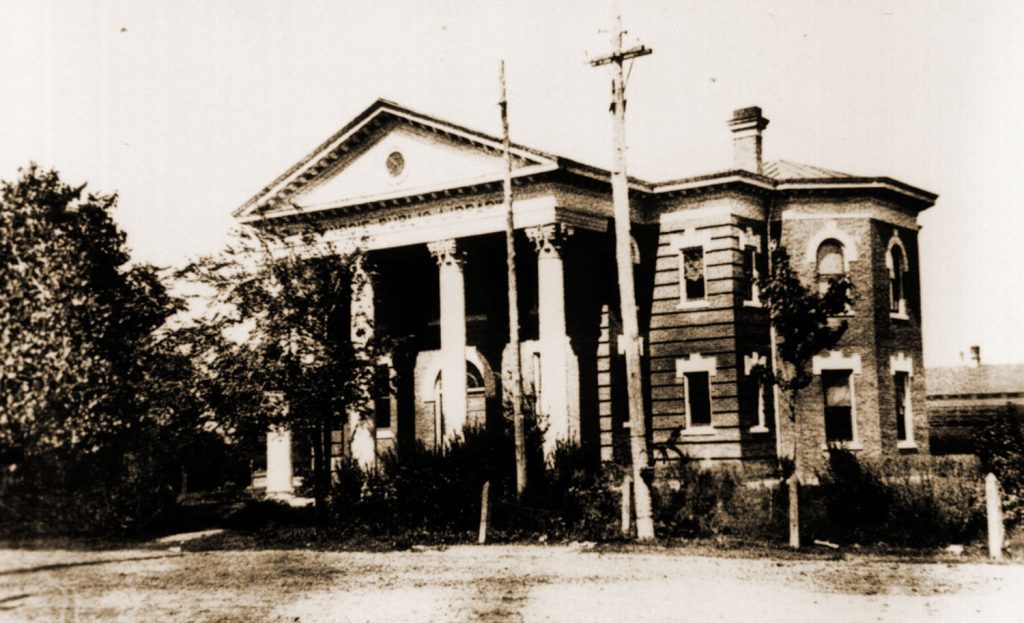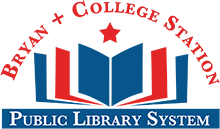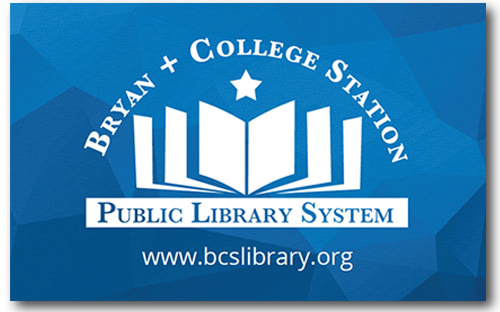
Scottish immigrant Andrew Carnegie firmly believed in self-education for everyone and that libraries helped those who helped themselves. He would provide funds for the construction of libraries if a city would provide a suitable site and agree to provide money equal to at least one tenth of the construction grant annually in order to maintain the library and purchase books.
Bryan was among the early cities that took advantage of his offer. In 1902, Bryan was fortunate enough to have among its citizens several intrepid ladies who found their city to be, to say the least, uncivilized. The streets were unpaved, there were more than a dozen saloons, everybody carried a gun, and hangings on the courthouse lawn were frequent. These ladies founded the “Mutual Improvement Club,” and set out to improve their home town.
In 1902, Mutual Improvement Club leaders Mrs. Rose Fountain Howell and Mrs. George M. Brand encouraged member Miss Lillie Wilson to contact her brother-in-law, Thomas W. Stewart. Mr. Stewart had been introduced to Mr. Carnegie by his father, and Miss Wilson asked Mr. Stewart to write Mr. Carnegie on Bryan’s behalf.
Mr. Stewart wrote Mr. Carnegie on Jan. 24 and Feb. 17, 1902. On April 8, 1902, Mr. Carnegie’s secretary, Mr. James Bertram, replied in the affirmative. The city fathers of Bryan sent a telegram to Mr. Carnegie that same night informing him that on March 5, 1902 the newly elected city council had set aside a site for the library and voted assurance of $1,000 yearly for upkeep.
The architect chosen for the new library was Professor Fred R. Giesecke, of the Agricultural and Mechanical College of Texas. Designed in the Greek Revival Style, in a Greek Cross plan, the building was to be made of red brick and fronted by four enormous Greek Corinthian columns topped with acanthus leaves. The building was opened to the public in December 1903.
The interior of the building features two matching hand-carved pine stairways, with square wood balusters and a turned balustrade. The stairwells, the tongue and groove pine flooring in the main part of the first floor, and the decorative pressed metal ceiling are all original to the building, and have been lovingly restored and maintained. Any necessary alterations on the second floor blend in with the original building design.
The Carnegie was restored at a cost of over ten times the $10,000 construction cost, and would not have been possible without a grant from the Texas Department of Transportation and generous gifts from many individuals and from groups like the Woman’s Club (originally the Mutual Improvement Club), and the Friends of the Bryan + College Station Public Library System. Restoration was completed in July 1999, and the rededication was held on July 10, 1999.
The Carnegie History Center houses many local history collections that cover not only the Bryan area, but also adjoining counties. The staff is constantly searching for local history and local photographs of this area throughout its history. We especially need maps, as well as, printed and photographic materials on ethnic groups, small businesses, and churches. Among the showpieces on the first floor are the Ana Ludmilla Gee Ballet Collection, Harvey Mitchell’s vernier compass, a sketch for the original site of the City of Bryan, and a miniature replica of the “Blue” or “Steamboat House,” an early Calvert home destroyed by fire. Other important collections are city directories and telephone books, rare adult and children’s books.
The second floor is dedicated to genealogical research, with materials emphasizing ethnic and areas from which many immigrants came to this area.


